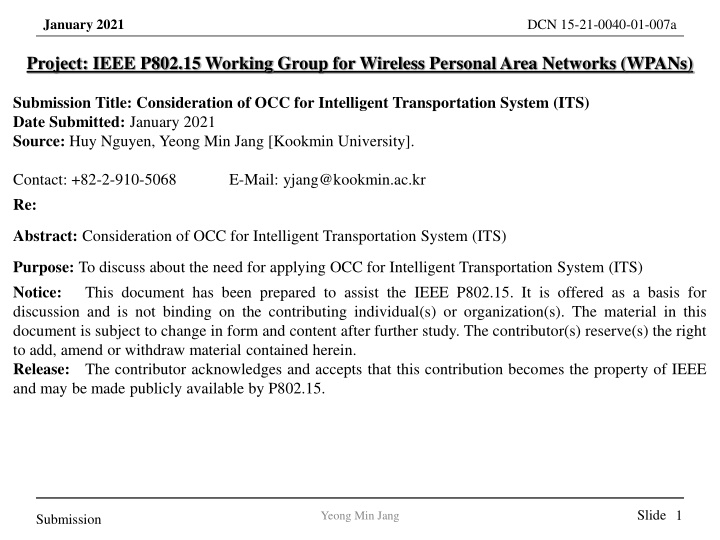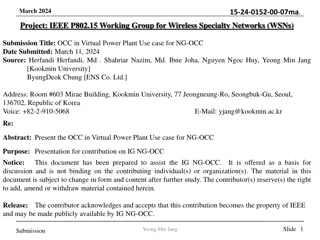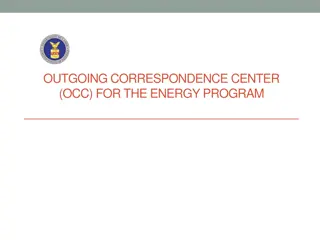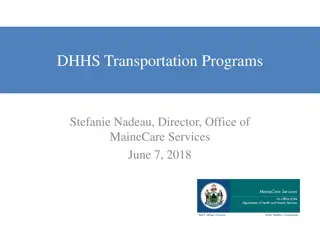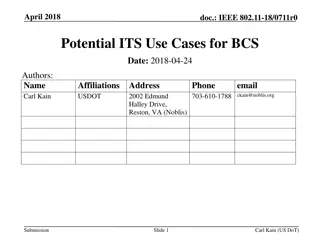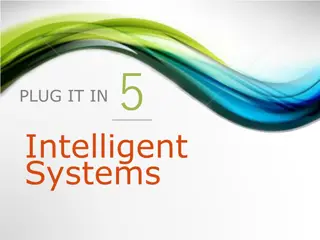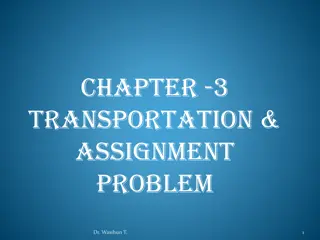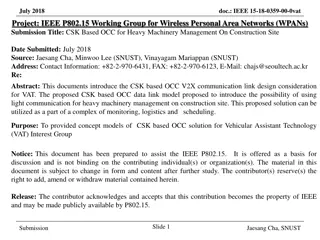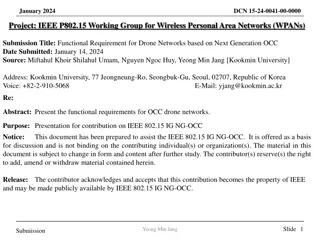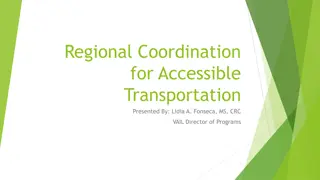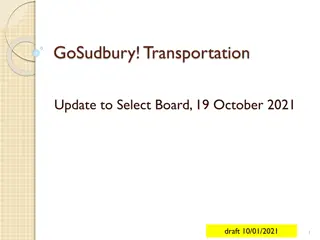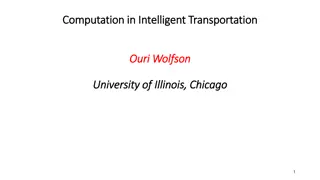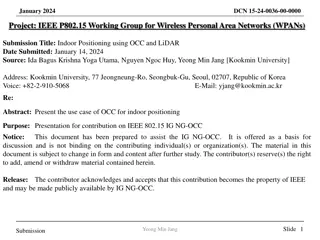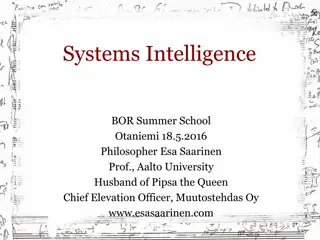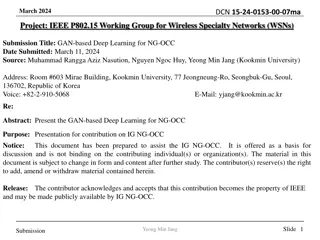Consideration of OCC for Intelligent Transportation Systems
This submission discusses the application of Optical Camera Communication (OCC) for Intelligent Transportation Systems (ITS). It covers the advantages of ITS, scenarios for information processing and V2V communication using OCC technology.
Download Presentation

Please find below an Image/Link to download the presentation.
The content on the website is provided AS IS for your information and personal use only. It may not be sold, licensed, or shared on other websites without obtaining consent from the author.If you encounter any issues during the download, it is possible that the publisher has removed the file from their server.
You are allowed to download the files provided on this website for personal or commercial use, subject to the condition that they are used lawfully. All files are the property of their respective owners.
The content on the website is provided AS IS for your information and personal use only. It may not be sold, licensed, or shared on other websites without obtaining consent from the author.
E N D
Presentation Transcript
January 2021 DCN 15-21-0040-01-007a Project: IEEE P802.15 Working Group for Wireless Personal Area Networks (WPANs) Submission Title: Consideration of OCC for Intelligent Transportation System (ITS) Date Submitted: January 2021 Source: Huy Nguyen, Yeong Min Jang [Kookmin University]. Contact: +82-2-910-5068 Re: E-Mail: yjang@kookmin.ac.kr Abstract: Consideration of OCC for Intelligent Transportation System (ITS) Purpose: To discuss about the need for applying OCC for Intelligent Transportation System (ITS) Notice: This document has been prepared to assist the IEEE P802.15. It is offered as a basis for discussion and is not binding on the contributing individual(s) or organization(s). The material in this document is subject to change in form and content after further study. The contributor(s) reserve(s) the right to add, amend or withdraw material contained herein. Release: The contributor acknowledges and accepts that this contribution becomes the property of IEEE and may be made publicly available by P802.15. Slide 1 Yeong Min Jang Submission
January 2021 DCN 15-21-0040-01-007a Consideration of OCC for Intelligent Transportation System (ITS) Slide 2 Yeong Min Jang Submission
January 2021 DCN 15-21-0040-01-007a Introduction An intelligent transportation system (ITS) is an advanced application which aims to provide innovative services relating to different modes of transport and traffic management. Advantages of ITS: Secure, safe and comfortable movement of drivers Reduce delay time and congestion Increase convenience for drivers Parking information and guidance Slide 3 Yeong Min Jang Submission
January 2021 DCN 15-21-0040-01-007a Intelligent Transportation Systems (ITS) Scenario ITS scenario Information from vehicles and road side can be transmitted to a server for central fusion and processing. These data can be used to detect events such as road works, traffic jam, approaching emergency vehicle, etc. Such data are processed in order to produce driving recommendation dedicated to drivers and transmitted to another vehicles by wireless communication. Slide 4 Yeong Min Jang Submission
January 2021 DCN 15-21-0040-01-007a Scenario of V2V communication using OCC Scenario of V2V communication using OCC OCC uses vehicle backlight LED lights or traffic lights as Tx and camera in the vehicle as Rx. Here, the Tx transmit the vehicles status (speed, safety information, emergency message, and etc.) or the traffic condition. The receiver can be a single or multiple of image sensor which receives the transmitted information from the Tx. Slide 5 Yeong Min Jang Submission
January 2021 DCN 15-21-0040-01-007a OCC in Intelligent Transportation Systems (ITS) ITS Central Station ITS Central Server/ Network Interface OBU Antenna OBU Antenna ITS Roadside Station Human Machine Interface Human Machine Interface Application On-Vehicle Host Computer On-Vehicle Host Computer V2I OCC OBU OBU Comunication Network OBU Antenna OBU Antenna Onboard Unit (OBU) Onboard Unit (OBU) Personal Station V2V OCC Equipment Cabinet On-Vehicle Host Computer On-Vehicle Host Computer Human Machine Interface Human Machine Interface Overview of OCC-based ITS communication The ITS infrastructure and the ITS ad-hoc network are designed to accommodate and implement ITS services and applications. They are interconnected and connected to public access, private access, and local data networks. Slide 6 Yeong Min Jang Submission
